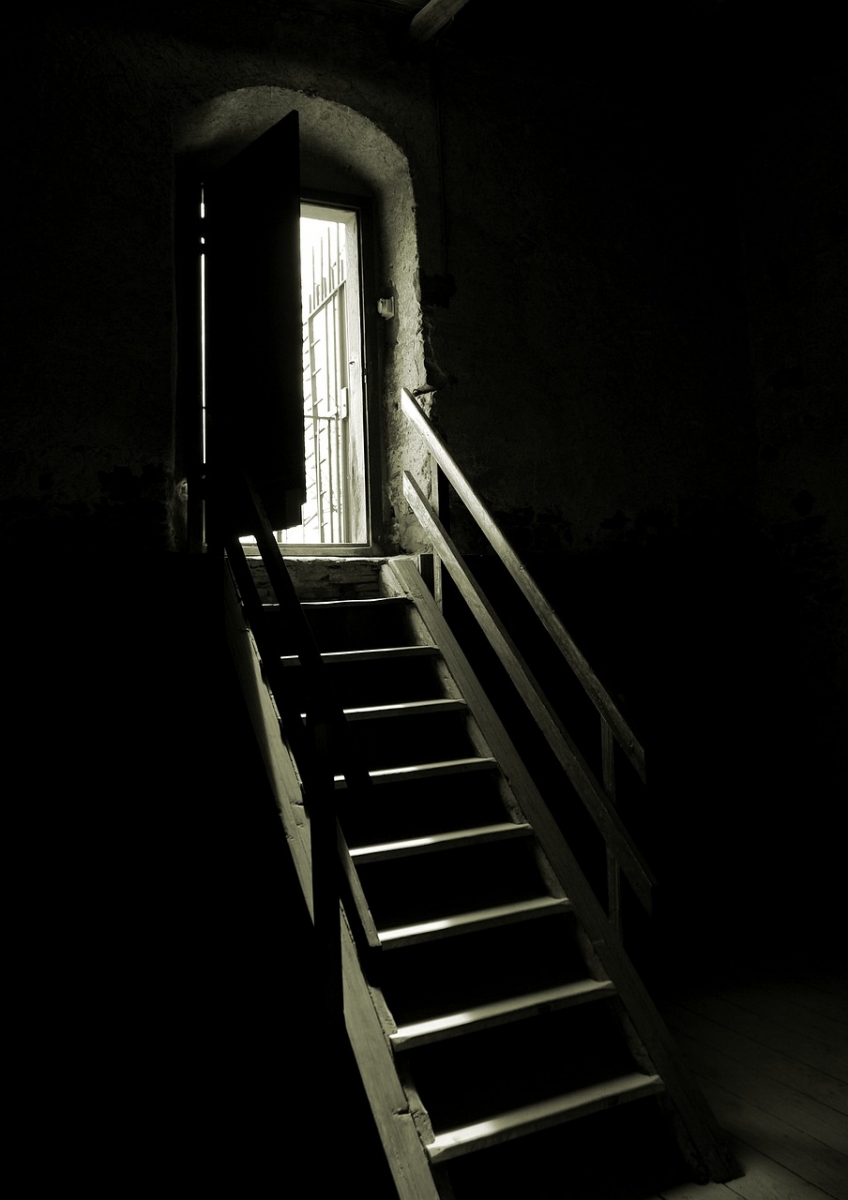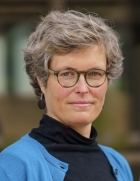Does organized ritual child abuse exist?
Editorial Assistants: Corinna Michels and Zoey Chapman
Note: An earlier version of this article has been published in the German version of In-Mind.
A significant number of therapists and self-defined victims report secret organizations that sexually abuse children for ideological or religious purposes and control them through targeted personality splitting. However, police investigations have so far been unable to uncover any evidence for these allegations. In this article, we discuss why the existence of such conspiratorial secret societies is not compatible with scientific findings, despite the reports of those affected, and to what extent suggested memories of the alleged acts represent a more reliable alternative explanation.
According to allegations by a relevant number of therapists and self-proclaimed victims there are secret organizations that sexually abuse children for ideological or religious purposes controlling them through intentional splitting of their personality structure. So far, police investigations have, however, not been able to obtain any evidence supporting such claims. In this article, we discuss why the existence of such conspiratorial secret societies cannot be reconciled with scientific findings, despite the reports of those allegedly affected. We also explore whether suggested memories of the alleged offences represent a more reliable alternative explanation.
Organized ritual violence as a conspiracy theory
In recent years, several instances of organized sexual abuse of children through groups of perpetrators have been uncovered, both in Germany and beyond. One particularly widespread network of such organized sexual abuse of children occurred in the German city of Bergisch Gladbach. Between 2019 and 2022 the network comprised more than 400 perpetrators who committed sexual offenses against more than 50 children. Several interest groups in Western countries (including a scientific project funded by the German government), however, have alleged an even more chilling variant of organized abuse: Organized ritual sexual abuse.
According to this notion, members of covert groups systematically commit child abuse in a ritualized way. That is, the sexual abuse of children is deemed to occur under the semblance of pseudo-religious or ideological conduct. According to an official German federal document this variant of abuse involves ‘symbols, activities or rituals’ that ‘have the appearance of religiosity, magic or supernatural meanings’ with the aim of ‘confusing, frightening, violently intimidating and indoctrinating the victims with religious, spiritual or ideological-religious beliefs’ [1, p. 221, translated from German].
In order to avoid detection and to be able to control the victims over extended periods of time, the perpetrators are claimed to use the most brutal violence to deliberately split the personality structure of infants and children through ‘specific forms of consciousness splitting and manipulation’ [2, p. 245, translated from German]. It is said that these separate sub-personalities are unaware of each other and are ‘specifically trained and used by the perpetrators for their own purposes’ [2, p. 245, translated from German]. The forms of violence exerted are also said to be of such a significant extent that one must expect damage not only to the psyche, but also to life and limb.
 Picture 1: Organized child abuse is a sad reality. However, there is no evidence of ritually motivated child abuse using targeted personality splitting.
Picture 1: Organized child abuse is a sad reality. However, there is no evidence of ritually motivated child abuse using targeted personality splitting.
To date no investigative or factual evidence of such ritual sexual abuse has been found. Yet there are individuals who assert that they were subjected to such acts; scientists and experts who consider these statements to be credible; and a federal ministry that provides funding for research into ritual abuse. How can this apparent contradiction – no objective evidence of brutal ritualized violence despite subjective reports from alleged victims – be explained on the basis of current scientific knowledge?
Astonishing success of the cover-up of ritual abuse organizations
It is worth taking a closer look at how well documented the assumption is that there are ritual (often satanic) networks of violence, a conspiracy against children. One possible explanation as to why such abuse organizations have not yet been discovered lies in the inherent logic of such conspiracy theories: The involved acts are said to be carried out in very secret hiding places; victims would behave submissively and would not be able to recollect the acts for a long time due to the split personality induced by the perpetrators; and powerful members of the responsible clandestine organizations, simultaneously active in the highest circles of politics and the police, would enable a successful cover-up of these atrocities. As long as the alleged conspiracy remains secret, it can hardly be refuted with arguments.
There is, however, a constant possibility for every group of individuals keeping a secret that this very secret will come to light – through leakage or due to physical evidence (e.g., retrieval of documents/communication from the organization/ forensic evidence). British physicist David R. Grimes [3] used mathematical modelling to demonstrate how likely it is that conspiracies assumed to be relevant will be exposed. Based on the time until real conspiracies were uncovered (e.g., the NSA project PRISM uncovered by Edward Snowden) and the estimated number of people involved, a probability that the conspiracy will collapse from within can be gauged for other putative conspiracies.
 Picture 2: Infantile amnesia - memories of early childhood are hardly present.
Picture 2: Infantile amnesia - memories of early childhood are hardly present.
Grimes [3] came to the rather sobering conclusion that for almost all putative conspiracies, the probability that they will remain secret tends toward zero over time (typically within 5 years). In other words: If there were indeed large ritual abuse rings, it would be an anomaly that, despite their long existence, neither factual evidence has yet been uncovered nor that any form of whistleblowing by someone involved had taken place. This is particularly astonishing because a) the reported acts of violence committed by ritual abuse rings assumed to be most grievous [2] so that the injuries or even deaths caused should be objectively verifiable or at least leave forensic trace evidence, and b) investigative authorities have been investing extensive resources in the investigation of child abuse cases for years – with notable success in uncovering non-ritual child abuse rings. Despite considerable efforts no proof of the existence of ritual child abuse has been found.
Astonishing results on memories of ritual violence
Although there is no factual evidence of large-scale ritual sexual abuse there are individuals who report that this is exactly what happened to them [i.e. 2], for critical appraisal of such assertions, see [4]. Such reports do, however, contain several details that are difficult to reconcile with scientific knowledge about human memory. In the aforementioned online survey by Nick et al. [2], for instance, half of the participants reported that the violence had already begun before their third birthday, but that they had only become aware of it much later (the majority at over 25 years of age) – even though referring to years of enduring the most severe forms of violence. Two aspects of this description are in direct contradiction to what is well established in memory psychology.
Firstly, research clearly supports the existence of infantile amnesia: People cannot remember events from the first two years of their life [5]. Among other things, this is attributed to the development of new nerve cells after birth (hippocampal neurogenesis), which is associated with the decay of extant memories [6]. In addition, human memory and the retrieval of information are organized through language. Thus, a register for retrieval is lacking prior to the acquisition of language skills [7].
 Picture 3: Keeping a conspiracy secret is unlikely in the long term.
Picture 3: Keeping a conspiracy secret is unlikely in the long term.
In this respect, it is hardly compatible with scientific findings that the autobiographical reports of violence before the age of three are supposed to be the victims’ own memories. It is conceivable that others may have informed the victims about such events at a later point in time. Yet this is where the second implausible aspect comes into play: The extremely long period of time between experiencing traumatizing events and becoming aware of them. People who believe that it is feasible to rediscover memories after such a long time often argue that extremely traumatizing memories were repressed (or kept at an unconscious level) because they were too stressful and could only ‘resurface’ much later – or be recovered with therapeutic help.
The notion of repression goes back to Sigmund Freud. Even though Freud revised this idea later and focused on repressed desires or drives (not memories), the conviction that repression was a fact is still very popular. It is also still widespread among psychotherapists [8], [4]. There is, however, no sound empirical evidence supporting this assumption. Quite the contrary, memory research suggests the opposite: Human beings remember emotional events and those that are relevant for the self particularly well [9], [10]. Even in the case of traumatizing events, it tends to be the case that those affected cannot forget these harrowing experiences [11] and are often haunted by tormenting intrusions [12]. Taken together, from a scientific perspective, the circumstances described by the majority of people who state that they have been victims of ritual sexual violence are in stark contrast to various well-documented findings from the psychology of memory.
Alternative explanations for reports of ritual sexual violence
If not rooted in real events, how else may such reports of alleged experiences come about? After all, it can be assumed that those affected report honestly about their impression of having endured such abuse. In order to develop an alternative explanation for these reports, it is worthwhile to consider two phenomena: Confirmatory information processing and false memories.
Views about the world (such as those about the existence of ritualistic secret societies) are very rarely generated bottom-up (i.e., through a careful weighting of available evidence, ultimately reaching an inference), but rather top-down: Information and clues are sought that allow confirming an already existing belief. Such confirmatory information processing (i.e., the selective search for and weighting of information that confirms pre-existing beliefs), is not a unique feature with respect to ritual sexual abuse, but a fundamental phenomenon in human information processing. Confirmatory information processing is at play unless people actively work against such confirmation bias [13].
The basic mechanisms of confirmatory information processing are easily activated within a therapeutic context. The conviction of individuals who already believe in (or are at risk of believing in) ritualistic sexual abuse interacts with the view of their psychotherapists or counselors. If both parties consider (a) repressed trauma from childhood as the cause of current problems, and (b) ritual abuse networks as real, this will likely encourage them to search for such repressed traumas. Such a search for inaccessible trauma memories may even commence with the best of intentions. Ultimately, the psychotherapists or counselors may reinforce cues that accord with their suspicions selectively; use imagination techniques to create mental images of suspected events; and interpret ambiguous information in a belief-consistent way (e.g., mistaking vague dream images for accurate memories) [7]. Even mundane, seemingly innocuous, and everyday modes of communication as (a) repeated questions, (b) directing attention to certain statements made by the client, or (c) reinforcing certain statements have a high suggestive potential in counseling or psychotherapy [14].
Given this implicit expectancy, those supposedly affected will likely interpret even non-specific cues (e.g., their own suffering) through this biased lens and develop false memories of imaginary events they did not actually experience. Research shows that within just two to three conversations, a substantial proportion of respondents (up to 56%) can be led to develop false memories of events that they did not experience [15].
Conclusion: Does organized ritual abuse exist after all?
Taken together, the current state of evidence suggests that putative memories of ritual sexual violence, which only became accessible many years later, and even date back to the toddler phase (i.e., the time window of infantile amnesia), most likely represent false memories. Nevertheless, it is important to emphasize that it is presently not possible to exclude the hypothesis that some reports of ritual abuse are based on experience, even though highly unlikely. For reasons of logic, it is impossible to prove that something does not exist. Hence, conspiracy myths die slowly if at all: The believers can always object that the scientists simply did not look everywhere.
Regardless of the ground truth of allegations of ritualistic sexual abuse there is no doubt that the suffering is real for those affected. Even if the traumatizing events did not take place and actually represent false memories, those affected consider them to be real, with all the sequelae of fear, distrust, and distress.
Therefore, in debates on ritual sexual abuse, it can only be in the interest of all parties involved to take the suffering of those affected seriously and to help them as best as possible – regardless of whether they are actual victims of ritual violence or victims of false memories. It is important to communicate the current state of scientific knowledge and police investigations on ritual violence in a factual and nuanced manner. As described above, false memories of ritual violence may arise when those ultimately affected or mental-health professionals providing counseling/treatment are convinced that ritual abuse circles do exist. Knowing that to this day no evidence for the existence of such circles has transpired can reduce confirmatory information processing and interrupt a self-propagating system: A system in which reports of alleged ritual violence increase the likelihood that people will attribute their current suffering to such events, thereby generating similar reports from other individuals.
Bibliography
[1] C. Bergmann, “Abschlussbericht der Unabhängigen Beauftragten zur Aufarbeitung des sexuellen Kindesmissbrauchs [Final report of the Independent Commissioner for the Investigation of Child Sexual Abuse],“ Berlin , 2011. [Online]. Available: https://beauftragte-missbrauch.de/fileadmin/user_upload/Publikation_-_Ab...
[2] S. Nick, J. Schröder, P. Briken, and H. Richter-Appelt, “Organisierte und rituelle Gewalt in Deutschland [Organised and ritual violence in Germany],“ Trauma & Gewalt, vol. 12, no. 3, pp. 244-261, 2018. [Online]. Available: https://doi.org/10.21706/tg-12-3-244
[3] D.R. Grimes, “On the viability of conspiratorial beliefs,” PloS one, vol. 11, no. 1, 2016, 2016e0147905. [Online]. Available: https://doi.org/10.1371/journal.pone.0147905
[4] A. Mokros, J. Schemmel, A. Körner, A. Oeberst, R. Imhoff, K. Suchotzki, V. Oberlader, R. Banse, A. Kannegießer, S. Gubi-Kelm, R. Lehmann, and R. Volbert, “Rituelle sexuelle Gewalt: Eine kritische Auseinandersetzung mit fragwürdigen empirischen Belegen für ein fragliches Phänomen [ Ritual sexual violence: A critical examination of questionable empirical evidence for a questionable phenomenon],“ Psychologische Rundschau, vol. 75, pp. 216-228, 2024. [Online]. Available: https://doi.org/10.1026/0033-3042/a000663
[5] H. Hayne, and F. Jack, “Childhood amnesia,” WIREs Cognitive Science, vol. 2, no. 2, pp. 136-145, 2011. [Online]. Available: https://doi.org/10.1002/wcs.107
[6] S. A. Josselyn, and P. W. Frankland, “Infantile amnesia: a neurogenic hypothesis,” Learning & Memory, vol. 19, no. 9, pp. 423-433, 2012. [Online]. Available: https://doi.org/10.1101/lm.021311.110
[7] M. L. Howe, and M. L. Courage, “On resolving the enigma of infantile amnesia,” Psychological Bulletin, vol. 113, pp. 305-26, 1993. [Online]. Available: https://doi.org/10.1037/0033-2909.113.2.305
[8] E. F. Loftus, and D. David, “Recovered Memories,” Annual Review of Clinical Psychology, vol. 2, no. 1, pp. 469-498, 2006.
[9] D. Berntsen, and D. C. Rubin, “Emotionally charged autobiographical memories across the life span: The recall of happy, sad, traumatic and involuntary memories,” Psychology and Aging, vol. 17, no. 4, pp. 636-652, 2002. [Online]. Available: https://doi.org/10.1037/0882-7974.17.4.636
[10] C. S. Symons, and B. T. Johnson, “The self-reference effect in memory: a meta-analysis,” Psychological Bulletin, vol. 121, no. 3, pp. 371-394, 1997. [Online]. Available: https://doi.org/10.1037/0033-2909.121.3.371
[11] R. J. McNally, “Debunking myths about trauma and memory,” Canadian Journal of Psychiatry, vol. 50, no. 13, pp. 817-822, 2005. [Online]. Available: https://doi.org/10.1177/070674370505001302
[12] E. A. Holmes, and C. Bourne, “Inducing and modulating intrusive emotional memories: A review of the trauma film paradigm,”. Acta Psychologica, vol. 127, no. (3), pp. 553-566, 2008. [Online]. Available: https://doi.org/10.1016/j.actpsy.2007.11.002
[13] A. Oeberst, and R. Imhoff, “Toward parsimony in bias research: A proposed common framework of belief-consistent information processing for a set of biases,” Perspectives on Psychological Science, vol. 18, no. 6, pp. 1464-1487, 2023. [Online]. Availabe: https://doi.org/10.1177/17456916221148147
[14] S. Garven, J. M. Wood, R. S. Malpass, and J. S. III. Shaw, “More than suggestion: The effect of interviewing techniques from the McMartin Preschool case,” Journal of Applied Psychology, vol. 83, no. 3, pp. 347–359, 1998. [Online]. Available: https://doi.org/10.1037/0021-9010.83.3.347
[15] A. Oeberst, M. M. Wachendörfer, R. Imhoff, and H. Blank, “Rich false memories of autobiographical events can be reversed,” Proceedings of the National Academy of Sciences, vol. 118, no. 13, e2026447118, 2021. [Online]. Available: https://doi.org/10.1073/pnas.2026447118
Picture Sources
PICTURE 1: https://pixabay.com/de/photos/kerker-verlie%C3%9F-dunkel-angst-alt-2260706/
PICTURE 2: https://pixabay.com/de/photos/fotos-h%c3%a4nde-halten-alt-256887/
PICTURE 3: https://pixabay.com/de/photos/geheimnis-geschlossen-hoch-psst-5137228/




